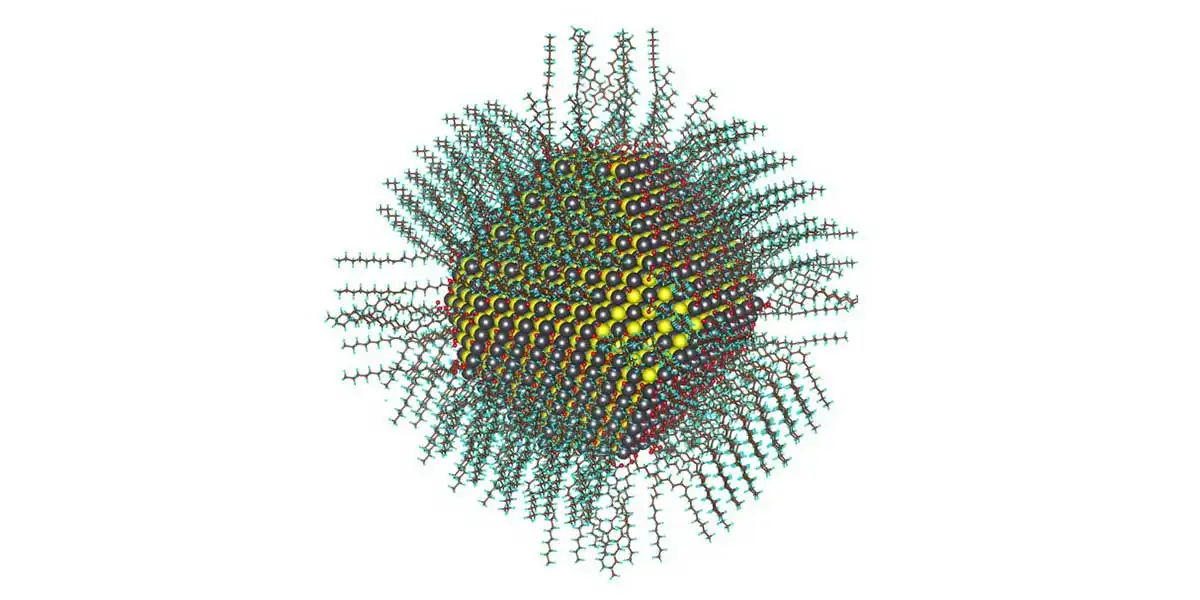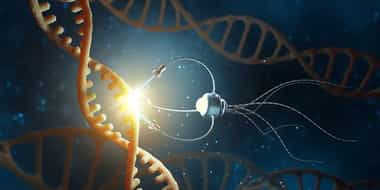Researchers in the field of nanotechnology have discovered new tools that could change how cancers and brain diseases, such as dementia and Parkinson’s disease are treated in the future.
A development in nanotechnology engineering could form new solutions to getting around the body’s immune system response in the targeted treatment of cancerous cells, which causes both the healthy and diseased cells to die.
The discovery was made by Dayong Jin, University of Technology Sydney (UTS) and co-authors from the ARC Centre of Excellence for Nanoscale Biophotonics at Sydney-based Macquarie University, and collaborators from the University of Wollongong and the National University of Singapore,
reports the UTS News in Science.
Jin’s research is aimed at developing new shaped nanocrystals formed from ordered atom clusters. The different shaped or ‘hybrid’ nanocrystals act as new tools, or a new molecular tag, and a potential new vehicle for targeted drug delivery. Jin says the new type of nanocrystal could also lead to clearer diagnostic bio-imaging such as MRI scans and X-rays.
“Hybrid nanocrystals are multifunctional and able to do different things simultaneously. For example, one can design a super nanoparticle that has optical, magnetic and chemical responses which allows for multiple modality imaging of the disease and [eventually] super high resolution images,” he says.
“Having precise diagnostics is also important because when a surgeon operates they need to understand exactly where the tumor is. If higher resolution imaging is available, the surgeon will be able to see a precise boundary between the healthy cell and tumor cell which will result in a better outcome for the patient.”
Now that nanoparticles can be precisely controlled to create different shapes and sizes, researchers can begin to investigate whether the new type of nanoparticles have an impact on the transportation of drugs within the body.
WHAT IS NANOTECHNOLOGY?
Nanotechnology generally refers to technologies that create and/or use materials, devices and systems through the manipulation of matter at scales of less than 100 nanometers (one nanometer is one billionth of a meter or about the size of three atoms).
At the sub-100 nanometer (nm) scale, the properties that characterize larger systems do not necessarily apply,
according to BCC Research analyst Andrew McWilliams. Nanostructured metals are generally harder than macroscale metals, nanoceramics are softer, and some nanoalloys are harder up to a point, then softer.
Nanoscale materials’ light absorption properties also differ from macroscale materials; some materials become transparent if the particles are small enough. Because nanomaterials have large surface areas relative to their volumes, phenomena like friction and sticking are more important than they are in larger systems. Thus, nanotechnology is not an “industry” or a “market” in the same sense as biotechnology, for example.
Nanotechnology is an enabling technology; its importance chiefly lies in the impact that it will have on established industries and markets, especially in nanomedicine.
NANOTECHNOLOGY APPLICATION: NANOMATERIALS
McWilliams divides nanotechnology applications into three categories, one of which is nanomaterials. These are nanoscale substances that require further processing or the addition of other materials or input to accomplish their intended purpose.
Nanomaterials encompass a wide range of materials that are difficult to define or concisely categorize. Generally, a substance or object is considered a nanomaterial if it:
- has nanoscale dimensions or properties and at least one external dimension in the nanoscale (i.e., less than 100-nm) range;
- has internal structures (e.g., clusters, crystallites or molecules) in the 1-nm to 100-nm range;
- has nanosized component elements (e.g., nanocomposites) and structures or characteristics engineered on a molecular or nanoscale level;
- is not produced by living organisms in its usable form; and
- requires further processing or the addition of other materials or inputs to accomplish a useful objective.
BIOMEDICAL MARKERS AND DETECTION AIDS
Biomedical markers and detection aids are typically nanoparticles or nanocrystals that have been modified or engineered to assist in the identification or visualization of target analytes or anatomical/biological structures, says McWilliams. Types of nanoparticles that are used as markers and detection aids include gold, dendrimers, quantum dots and rare earth nanophosphors.
Quantum dots can be covalently linked to biomolecules using standard conjugation chemistry. The quantum dot-containing conjugate can then be used to detect its binding partner in a particular assay. Any assay that currently uses fluorescent-tagged molecules, colorimetric enzymes or colloidal gold can be improved with quantum dot-tagged conjugates.
Gold nanoparticles have been used for several decades as labels in optical and electron microscopy studies and immunoassays. These components are especially useful for biological electron microscopy, because most proteins can be easily coupled to the nanoparticles and the latter can be easily seen in the electron microscope.
Nanoparticulate gold labels also are used in rapid immunoassays and other types of diagnostic tests designed for rapid analysis of small samples of bodily fluids, serum or feces, or to monitor environmental samples of soil, food or water. These rapid tests can detect very low levels of analytes, such as bacterial antigens, organic residues, drugs, hormones, proteins and carbohydrates. One of the most familiar examples of a rapid diagnostic test that uses colloidal gold labeling techniques is the familiar home pregnancy test kit.
Dendrimers are a type of polymer nanoparticle whose structure resembles that of a tree, in which the branches are interlinked polymerized chains of molecules, all converging on a single focal point or core. Dendrimer-antibody conjugates are used commercially in an immunoassay for the rapid and sensitive detection of markers indicative of heart attacks.
GLOBAL MARKET FOR NANOTECHNOLOGY PRODUCTS
The global market for nanotechnology products is estimated to reach nearly $26 billion and $64.2 billion in 2014 and 2019, respectively, reflecting a five-year compound annual growth rate (CAGR) of 19.8%.
This figure includes well-established commercial nanomaterials applications such as nanoparticle-based sunscreen products and nanocatalyst thin films for catalytic converters, as well as new technologies such as nano-thin film solar cells, nanolithographic tools and nanoscale electronic memory.
Nanomaterials, particularly nanoparticles and nanoscale thin films, dominated the market in 2013, accounting for 78.8% of the total market. McWilliams anticipates this trend to continue through 2019, with nanomaterials increasing its market capture to 82.1%.




